Oct 10, 2017 | Antiques, Blog, Collectibles, Home
Antique Coffee Tins are highly collectible…
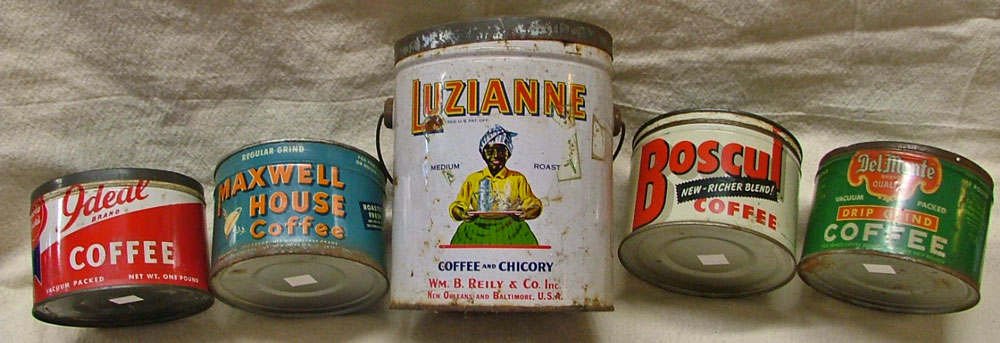
In researching a bit more about collecting coffee tins, we learned some interesting facts. First, that collecting antique coffee tins is second only to collecting tobacco tins. But this excerpt from Collectors Weekly is most interesting:
The widespread practice of packing food in tin cans and containers was a direct result of the public’s acceptance of the Germ Theory of Disease. In the 19th century, many Americans were still willfully oblivious to the breakthrough research of Louis Pasteur and Robert Koch. People were more interested in the pitches of snake-oil salesman and their medicine shows, where cure-all elixirs and exotic balms in medicine bottles were sold. It never occurred to many of these good folk that the best way to be healthy might simply to be clean.
- In the early 1800s, cleanliness was one way for the upper classes to distinguish themselves from the working and lower classes, as only the wealthy had access to water and soap. However, as germ theory became more prevalent during the Victorian Era, it became unacceptable for the working poor to be dirty. Most food was displayed and accessed at the local five-and-dimes in communal food barrels—grimy, germ-infested hands would not do.
These days, people of means tend to dismiss canned or “processed” food as something people without access to fresh food eat. But in the late 1800s, food in tins was highly desirable. It was considered much more sanitary, and therefore healthier, than food offered in bins or barrels.
…from Collectors Weekly
The Vintage Virtue website discusses collecting coffee tins with this introduction:
The coffee tin came into being as long ago as the early 1800’s in a time when most people bought fresh green coffee beans to roast and grind fresh at home. Pre-roasted and packaged coffee became popular much later in the late 1880’s. Over the years, coffee containers were produced in many shapes and sizes; they could be square, cylindrical, rectangular, or trapezoid shaped and ranged in size from one ounce sample tins to large bins holding more than fifty pounds of coffee. Coffee came in boxes and in pails with metal handles and in addition to tin, some containers were made of cardboard and others featured paper labels over tin. The lids also can in a variety of styles that evolved other the years. The early tins had hinged lids or lids that could be pulled off. Later tins were made with pry lids, slip lids, and lids that screwed off and on, these were followed by lids that utilized keys for removal.
… from VintageVirtue.net
The advertising, as in the graphics on the tins, has also made them highly collectible. The graphics became more interesting as companies realized that making the tins reusable with very beautiful graphics added to the appeal for their product. Ah yes…. advertising!
Now that you appreciate a bit more the value of the ‘tin can’ … stop by Bahoukas Antique Mall to see the many collectible tins we have for coffee, tobacco and other products.
Oct 6, 2017 | Blog, Collectibles, Decorating, Home
Bring Summer Indoors
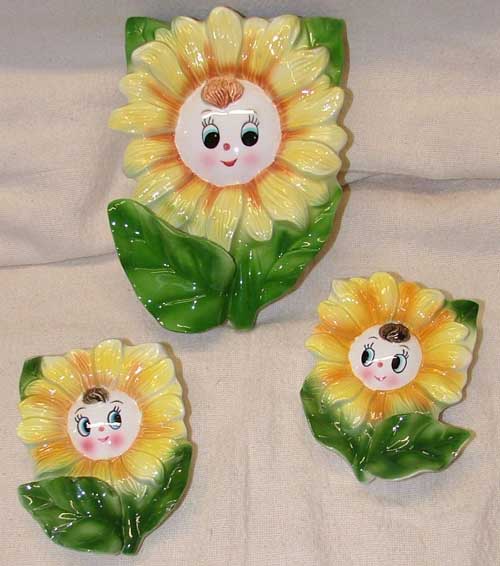
Wall Pockets are a wonderful way to bring a little summer sunshine into your home as the cooler weather announces the arrival of Autumn.
The photo at left is a set of 3 Smiley Flowers by Holt-Howard. These would make a cute addition to a sunroom or a kitchen with a wee bit of ivy growing from them. Below is a bit of history of the Holt-Howard Corp.
Holt-Howard was an importer that started working in New York City in 1949 and moved to Stamford, Connecticut, in 1955. John and Robert Howard and Grant Holt started Holt-Howard, whose first products were Christmas items made and sold in the United States. The company sold many types of table accessories, such as condiment jars, decanters, spoon holders, and saltshakers. The figures shown on some of its pieces had a cartoon-like quality. The company was bought out by General Housewares Corporation in 1969. Holt-Howard pieces are often marked with the name and the year or HH and the year stamped in black. The HH mark was used until 1974. There was also a black and silver label. Production of Holt-Howard ceased in 1990. Similar pieces are being made today by Grant Holt, one of the founders, and are marked GHA. from Kovels.com
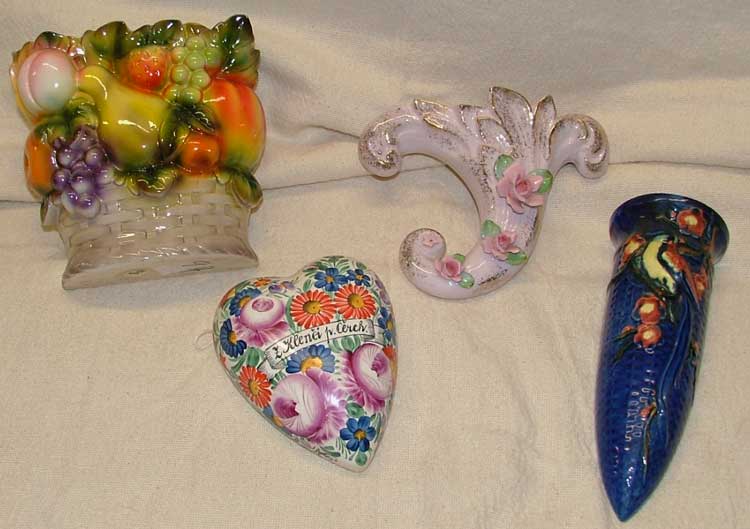
Here are a few more beautiful wall pockets. There really is a design for every decor. Top left is a basket filled with fruit and top right is a cornucopia with rosebud decoration by Lefton China. Bottom right is a Czechoslovakian heart shape covered in florals and the deep blue tube on the bottom right has a bird/flower design. Besides tucking an air plant or a bit of ivy in them, they could also be used to store pencils, paint brushes or other small items.
Wall pockets of yesteryear can add a dash of wonderful color and creativity. So drop by Bahoukas Antique Mall soon and see what wonderful treasures you might find to add your personality to your home and office! We’ll be watchin’ for you!
Sep 25, 2017 | Art, Blog, Collectibles, Home
Art IS in The Eye of the Beholder…
Lionel Barrymore is best known for his character “Mr. Potter” in the 1946 film It’s a Wonderful Life. Of course he is known for many other performances in movies, stage and radio. But did you know he was also …
Composer; graphic artist; novelist
Barrymore also composed music. His works ranged from solo piano pieces to large-scale orchestral works, such as “Tableau Russe,” which was performed twice in Dr. Kildare’s Wedding Day (1941), first by Nils Asther on piano and later by a full symphony orchestra. His piano compositions, “Scherzo Grotesque” and “Song Without Words”, were published by G. Schirmer in 1945. Upon the death of his brother John in 1942, he composed a memoriam, which was performed by the Philadelphia Orchestra. He also composed the theme song of the radio program Mayor of the Town.
Barrymore was a skillful graphic artist, creating etchings and drawings. For years, he maintained an artist’s shop and studio attached to his home in Los Angeles. Some of his etchings were included in the Hundred Prints of the Year.
He wrote a historical novel, Mr. Cantonwine: A Moral Tale (1953). from Wikipedia
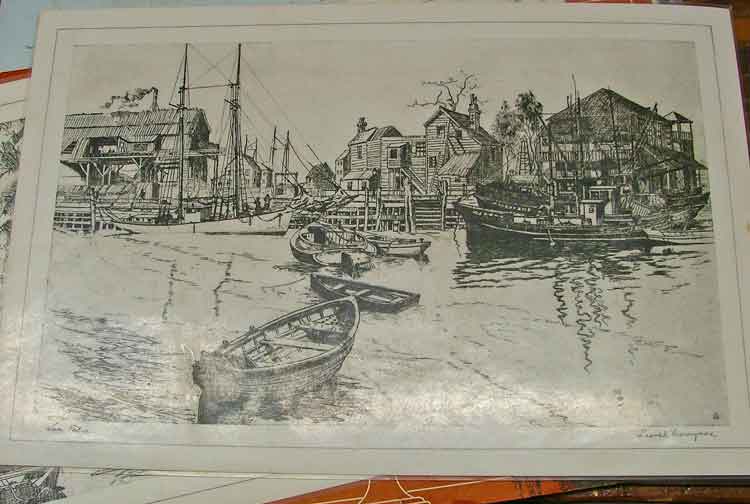
This place mat is titled “San Pedro” and is part of a set created by Lionel Barrymore.
We have a beautiful set of dinner mats (place mats) from this well known actor who would rather sketch than act. He loved the sea. This beautiful set of place mats would be wonderful on your table or even, perhaps, framed and hung on a wall. They were originally “presented with the compliments and good wishes of The Holland Mfg. Company of Baltimore, NY.”
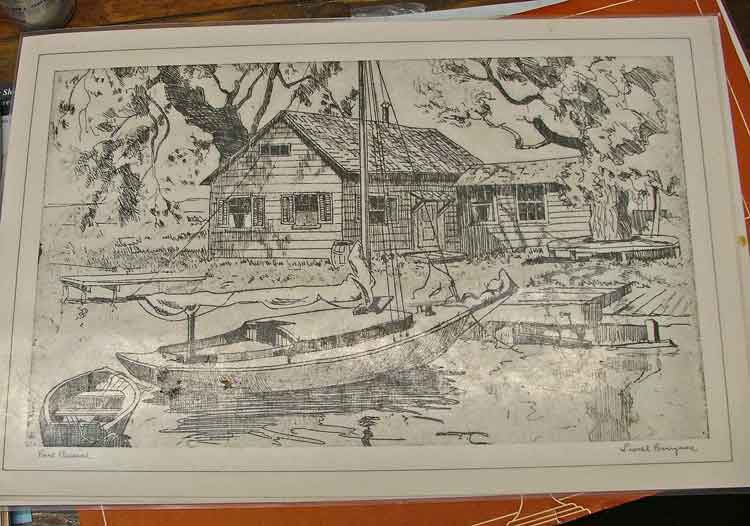
This place mat is titled “Point Pleasant” and is part of a set created by Lionel Barrymore.
A few other unique pieces tucked among our 2200 sq ft of wonderful antiques and collectibles include these smaller pieces. On the left is an adorable baby with teddy bear that has a curved cover with black decoration, painted by Charlotte Cox Becker. Born in 1901 and died in 1984, she lived and worked in both Germany and the U.S. and is best known for children’s book illustration, figure and genre, lithography. Her baby pictures were very popular and still are today. We do not have any information on the silhouettes.
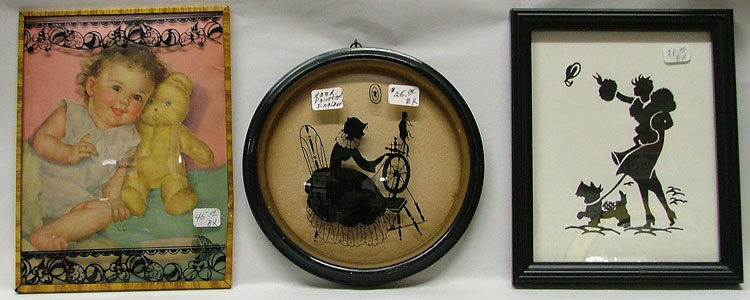
As you have seen here, art is very much a part of the wonderful discoveries you might make when browsing the many shelves and corners of Bahoukas Antique Mall and Beer MuZeum. We look forward to giving you a warm ‘hello’ next time you drop by. See you soon!
Sep 6, 2017 | Blog, Collectibles, Home
When the power goes out, what do YOU do?
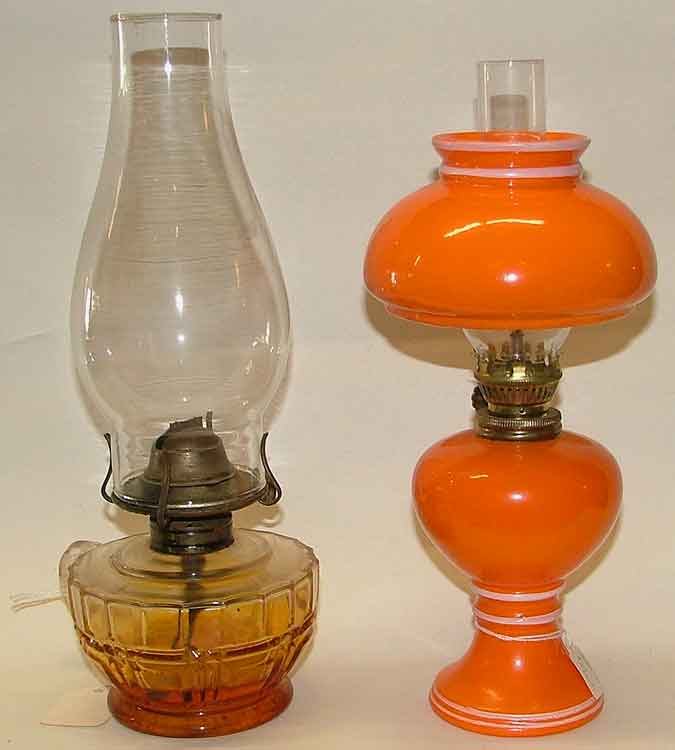
The simple oil lamp has a very long history keeping humans safe, working, and comfortable.
After human race first tamed the fire and started to use it as a light source, a need appeared for a smaller, controllable flame – a more sophisticated solution, if you will. First such solution was an oil lamp some 70.000 B.C. Early humans used shells, hollow rocks or any nonflammable material as a container and in it some moss soaked in animal fat which they would ignite and it would burn with a flame. from History of Oil Lamps
Then in Egypt, Greece, and Rome they began to make the lamps out of man-made materials: terracotta, bronze, stone and alabaster in a shape of a dish that would hold oil and a place for a wick that would prolong burning and prevented the whole surface of the oil to catch fire.
That design stayed the same until the 18th century when Aime Argand, Swiss chemist, invented and patented “Argand Lamp”. His lamp consisted of container for oil as all the other lamps but had cylindrical wick to give larger surface for a larger flame and glass tube chimney around the flame to direct the draft, make a stronger flame and make lamp safer for carrying. from History of Oil Lamps
Here’s another great link for more details on Aime Argand, the Swiss chemist.
Then in the mid-19th century, kerosene lamps came on to the scene. We still use them today, mostly for ambiance. But, here at Bahoukas Antique Mall we also believe they have utilitarian value. If you’ve endured a nasty winter storm that kept the power off for days or a hurricane that meant battening down the hatches and surviving days without power, you know the value of a kerosene lamp to help you get through the tough times.
But the ordinary oil lamp also shared in the history of our developing country. A simple oil lamp allowed people to stay up later, to work in their barns and sheds, to read in the evening. They were used for signaling in the railroad industry and to light highways and towns.
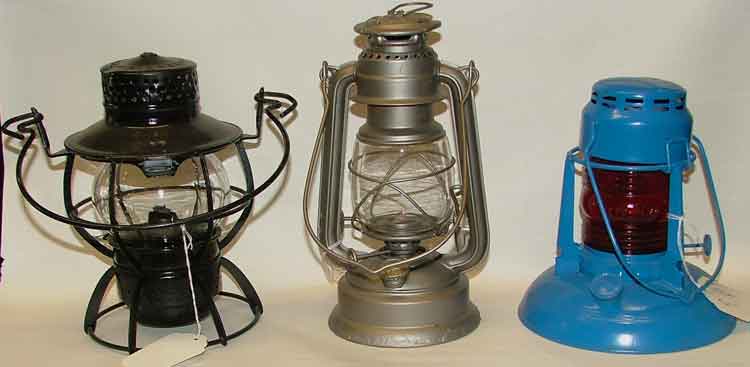
On the left is a Pennsylvania Railroad Lantern, 1920s, by Dressel in the U.S.
The middle is a Barn Lantern by Feuerhand of Germany, 1930s.
The Highway Lantern on the right is by Dietz of the U.S., 1930s.
In the days before city lights and GPS, railroad lanterns served a very important purpose: they communicated signals at night between trains and stations. Sometimes, a timely lantern signal meant the difference between life and death. In one romanticized 19th-century story, for example, a 15-year-old girl named Kate Shelley saved the Fast Atlantic Express from a broken bridge by alerting a station agent, whose lantern signal to the train averted disaster. from Collectors Weekly
So even today, one of our lamps might just make a power outage a bit more comfortable as you wait for your electric to come back on. Stop by today and see what we have available – lots of styles and sizes!
Sep 4, 2017 | Blog, Collectibles, Decorating, Home
Linens Napkins, Tablecloths, Hankies and more
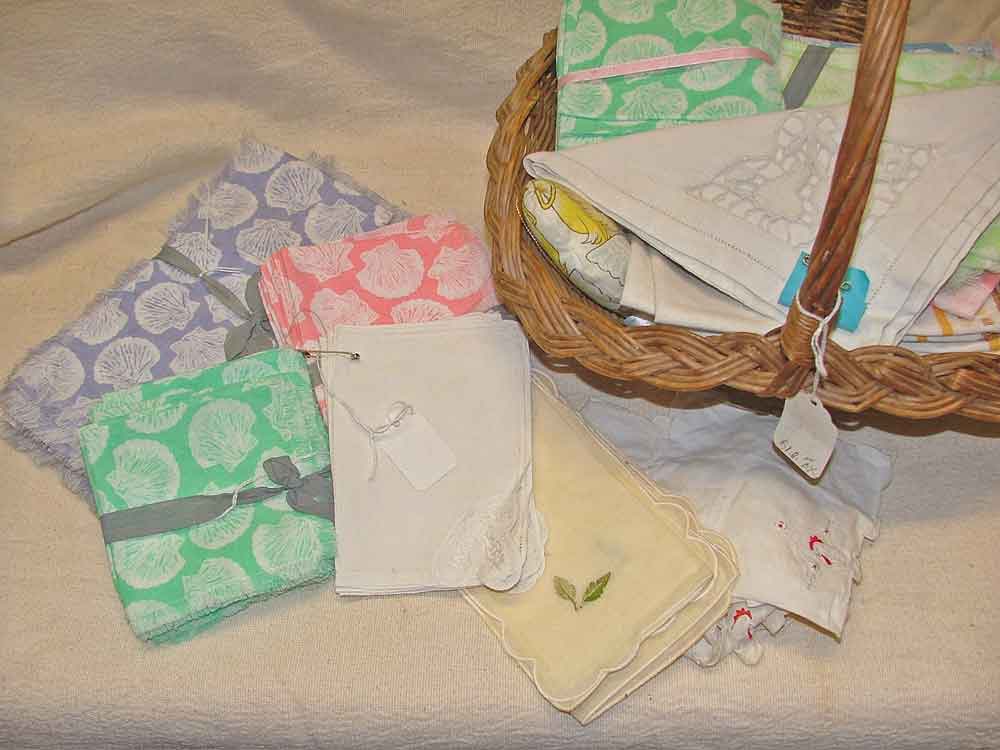
Vintage Linens are beautiful and often real artistry in their making. But, although we now use tissues instead of cloth hankies, there are some wonderful ways to use vintage linens in today’s lifestyle. Check out this blog post: 15 Cute Ways to Repurpose Vintage Linens.
Here’s a beautiful close up of the detail on some of the pieces available in our store.
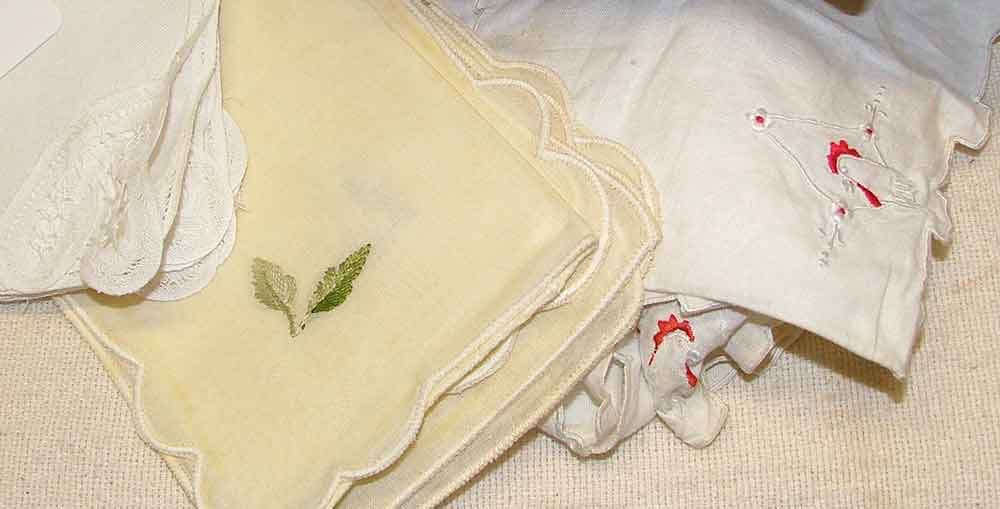
If you’re wondering how to clean vintage linens, we have two links available, PART 1 and PART 2 from Dell’s Daily Dish blog.
Stop in to Bahoukas Antique Mall and browse for the perfect vintage linens to use or to decorate with. Be sure to check out some of the awesome upcycled items created by Barbara of Green Joy!
Sep 2, 2017 | Blog, Collectibles, Decorating, Home
Vintage Kitchen Utensils Can Add Pizzazz!
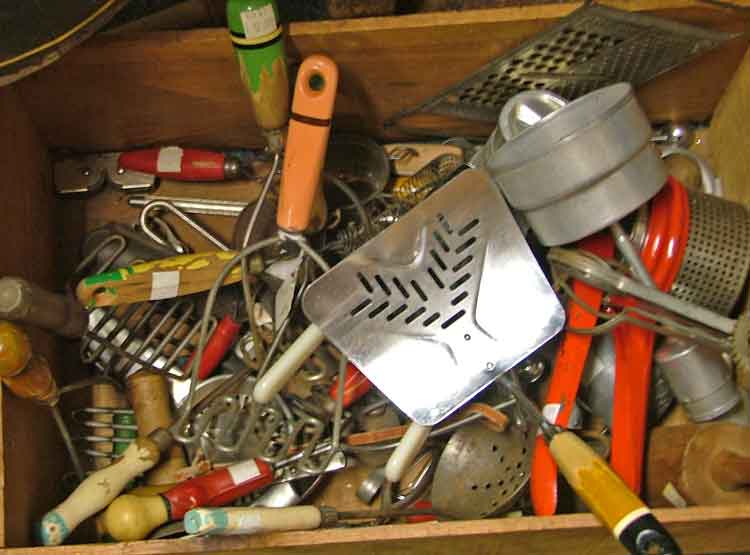
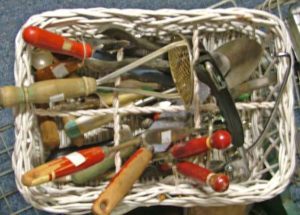 They may be older, but many function better than their modern-day counterparts. Even more of them are hard to find.
They may be older, but many function better than their modern-day counterparts. Even more of them are hard to find.
At Bahoukas, we have a wonderful variety of kitchen utensils and decorative items sure to add both function and interest to your kitchen decor.
Check out this great article of 25 Vintage Kitchen Tools You Don’t See Anymore!
I’m willing to bet that we have most of them. Stop by and check it out.














